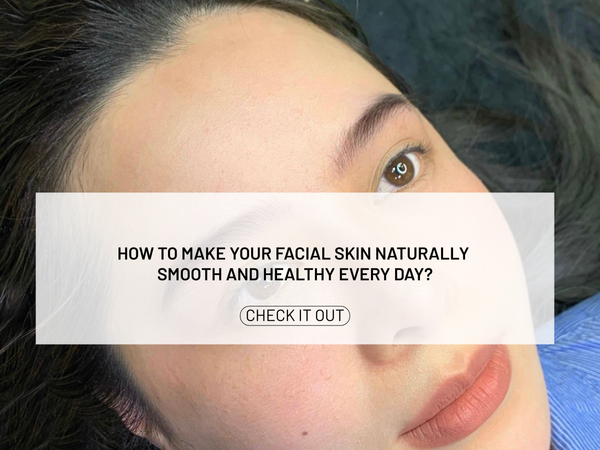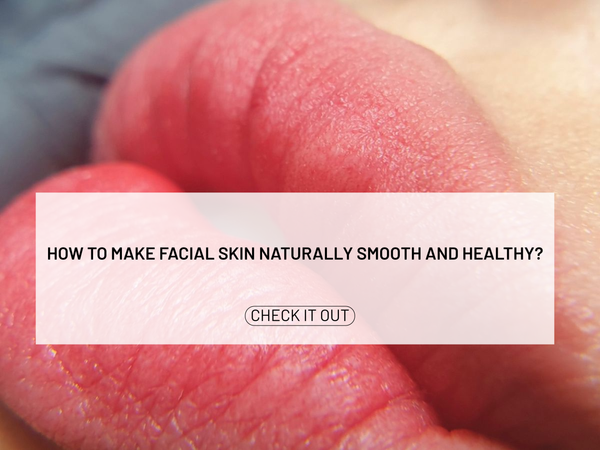Learn about the causes and effective prevention measures for skin pigmentation.
Melasma is a common problem that many people face, especially women. In this article, we will explore the causes of melasma, effective prevention measures, as well as treatment methods and skincare after treatment. Understanding this information will help you achieve healthier skin and greater confidence.
Main Points
- Melasma is often caused by the effects of UV rays, genetic factors, and hormonal changes.
- Using sunscreen daily is an effective way to prevent melasma.
- A proper diet helps improve skin condition and limit melasma.
- Healthy lifestyle habits such as getting enough sleep and avoiding stress are also very important.
- If you have melasma, you need to learn about suitable treatment and skincare methods.
Causes of Melasma
Effects of UV Rays
Melasma often appears due to the effects of UV rays from sunlight. UV rays can penetrate the skin, stimulating melanin production, leading to the formation of pigmented patches. To protect the skin, we need to:
- Use sunscreen daily.
- Avoid going out during peak sunlight hours.
- Wear hats and sunglasses when going outside.
Genetic Factors
Genetic factors also play an important role in the formation of melasma. If someone in the family has melasma, the risk of developing it will be higher. We should:
- Monitor the skin condition of ourselves and our family.
- Consult a doctor if there are any unusual signs.
Aging Process
As age increases, the skin loses elasticity and the ability to self-repair. The aging process makes melasma more likely to appear. To minimize this condition, we can:
- Maintain a healthy diet.
- Exercise regularly.
- Use suitable skincare products.
Hormonal Changes
Hormonal changes, especially in women during pregnancy or using birth control pills, can lead to melasma. To control this condition, we should:
- Consult a doctor if there are any unusual signs.
- Monitor the menstrual cycle and related symptoms.
Prevention Measures for Melasma

Use Sunscreen
We need to protect our skin from UV rays by using sunscreen daily. Sunscreen with an SPF of 30 or higher is the best choice. Remember to apply sunscreen at least 30 minutes before going outside.
Proper Nutrition
A balanced diet will help the skin become healthier. We should:
- Drink enough water every day.
- Include plenty of vegetables and fruits to provide vitamins and minerals.
- Avoid foods high in sugar and saturated fats.
Healthy Lifestyle Habits
We need to maintain good lifestyle habits to reduce stress and balance hormones:
- Get enough sleep every night.
- Exercise regularly to improve health.
- Engage in relaxing activities such as yoga or meditation.
Use Safe Cosmetics
We should choose cosmetics with clear origins and safe ingredients. Avoid low-quality products, as they can cause irritation and worsen melasma. Prioritize products containing niacinamide and vitamin C to help brighten the skin and reduce melasma.
Treatment Methods for Melasma
Use Oral Medications
We can start treating melasma by using oral medications. Some common medications include:
- Hydroquinone: This is the first choice of doctors, helping to lighten melasma patches.
- Corticosteroids and tretinoin: Help lighten skin color and reduce melasma.
- Kojic acid and azelaic acid: Often prescribed to improve skin pigmentation.
Use Topical Medications
In addition to oral medications, using topical medications is also very important. We can apply:
- Hydroquinone cream: Helps lighten dark areas of skin.
- Combination creams: Use creams containing multiple ingredients for more effective treatment.
High-Tech Therapies
If medications do not yield results, we can consider high-tech therapies such as:
- Laser: Helps destroy melanin pigments causing melasma.
- Chemical peels: Use acids to remove dark skin layers.
- Mesotherapy: Inject active ingredients into the skin to improve melasma.
Chemical Peels
Chemical peels are an effective method for treating melasma. We need to note:
- Choose the right acid for your skin condition.
- Perform at a reputable facility to ensure safety.
- Care for the skin after peeling to achieve the best results.
We need to remember that treating melasma does not only stop at using medications or therapies but also requires patience and proper care to maintain healthy skin.
Skincare After Melasma Treatment
Moisturizing the Skin
We need to moisturize the skin regularly to help the skin recover quickly. This not only helps the skin feel soft but also prevents dryness. Some moisturizing products to use include:
- Moisturizing cream with natural ingredients.
- Serum containing hyaluronic acid for hydration.
- Alcohol-free toner to soothe the skin.
Protecting the Skin from Environmental Impacts
After treatment, the skin is very sensitive and easily damaged. To protect the skin, we need to:
- Use sunscreen with SPF of 30 or higher.
- Wear a mask when going outside to avoid dust.
- Avoid direct exposure to sunlight for long periods.
Proper Diet
The diet also plays an important role in skin recovery. We should:
- Include plenty of fruits and vegetables to provide vitamins.
- Drink enough water every day to keep the skin hydrated.
- Avoid harmful foods for the skin such as fast food and greasy foods.
Avoiding Stress
Finally, keeping a relaxed mind is also very important. We should:
- Engage in light exercise.
- Take time to relax and rest.
- Participate in favorite activities to reduce stress.
These measures will help us maintain healthy and beautiful skin after melasma treatment.
Groups Prone to Melasma

Pregnant Women
Pregnant women are one of the most prone groups to melasma. Hormonal changes during this period can lead to increased melanin production, causing melasma.
People Using Hormonal Medications
Those using hormonal medications, such as birth control pills, are also at high risk for melasma. Hormonal changes can stimulate the formation of pigments on the skin.
People Frequently Exposed to Sunlight
Sunlight is one of the main causes of melasma. Those who are frequently exposed to sunlight without protection are more likely to develop melasma.
People with a Family History of Melasma
Finally, those with a family history of melasma are also at higher risk. If someone in the family has had melasma, it is likely that we will also encounter this condition.
Impact of Melasma on Life

Melasma is not only an aesthetic issue but also profoundly affects our psychology and daily life. Melasma can cause many negative impacts that we cannot overlook.
Psychological Effects
- Melasma often makes us feel self-conscious about our appearance.
- Many people feel shy when interacting with others, especially in social situations.
- Mood can be affected, leading to feelings of sadness or anxiety.
Reduced Self-Confidence
- Melasma can reduce our self-confidence in work and daily life.
- We may feel uncomfortable appearing in front of crowds.
- Having to conceal melasma with makeup can add extra pressure.
Difficulty in Communication
- Melasma can make us feel uncomfortable when communicating with others.
- We may worry about how others perceive us.
- This can lead to avoiding social communication situations.
Impact on Skin Health
- Melasma can be a sign that the skin is having problems and needs care and treatment.
- If not treated promptly, melasma can become more severe.
- Proper skincare is very important to maintain the health and beauty of the skin.
We need to be clearly aware of these impacts to find effective prevention and treatment measures for melasma.
Common Types of Melasma

Patchy Melasma
Patchy melasma is the most common type, usually appearing as large patches on the skin. We can recognize patchy melasma by the following characteristics:
- Color usually ranges from light brown to dark brown.
- Primarily appears on the forehead, cheeks, and chin.
- Clear borders, easily distinguishable from surrounding skin.
Spot Melasma
Spot melasma usually appears as small spots, which can be bothersome for those affected. Characteristics of spot melasma include:
- Color ranges from light brown to dark brown.
- Fuzzy borders, harder to recognize than patchy melasma.
- Commonly seen in women over 30, especially during perimenopause.
Mixed Melasma
Mixed melasma is a combination of patchy and spot melasma. This type of melasma is the hardest to treat with characteristics such as:
- Scattered on the face, especially on the forehead and both cheeks.
- Uneven color and size.
- Melasma roots lie deep under the skin, making treatment difficult.
Melasma is a common problem that many people face. There are many different types of melasma, each with its own causes and treatments. If you are looking for detailed information and effective solutions for this condition, please visit our website for dedicated consultation and support!
Conclusion
In conclusion, understanding the causes of melasma and applying preventive measures is very important. We need to protect our skin from the effects of sunlight by using sunscreen and proper shielding. Additionally, a healthy diet and reasonable lifestyle also help maintain skin health. If there are signs of melasma, seek a dermatologist for timely consultation and treatment. Proper skincare not only helps prevent melasma but also brings healthy and radiant skin.
Frequently Asked Questions
What is melasma?
Melasma is dark spots that appear on the skin, commonly found on the face, especially on the cheeks, forehead, and upper lip.
What causes melasma?
Melasma can be caused by many factors such as the effects of UV rays, hormonal changes, genetics, and the aging process.
Can melasma be completely cured?
Melasma is very difficult to completely cure, but it can be minimized and controlled through treatment methods.
How can melasma be prevented?
To prevent melasma, you should use sunscreen, maintain a healthy diet, and limit sun exposure.
Can melasma recur?
Yes, melasma can recur if not properly cared for and protected after treatment.
Who is at risk for melasma?
Pregnant women, people using hormonal medications, and those frequently exposed to sunlight are at risk for melasma.



